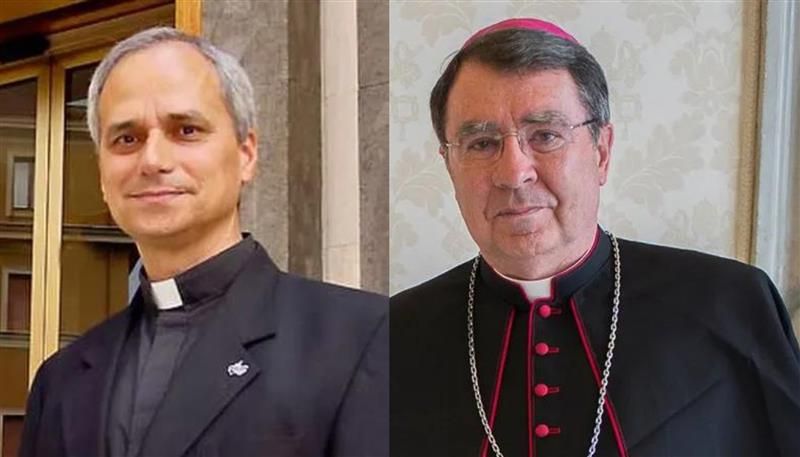
Washington D.C., Apr 11, 2025 / 08:00 am (CNA).
Renowned composer Sir James MacMillan sat down with the director of music at The Catholic University of America (CUA), Peter Kadeli, to discuss how music “helps carry the prayers of the ordinary people to God.”
MacMillan, one of today’s most successful composers, has gathered inspiration from his Scottish heritage and Catholic faith to create his music. He visited CUA as part of the Welcoming Children in Worship project, an initiative focused on encouraging Catholics to explore and utilize different worship resources, including sacred music.
MacMillan began by sharing that music has long been an integral part of his life, even as a young boy. “I began to realize that even in our local Catholic life, music was an important ingredient,” he said. “It wasn’t just added on as an extra. It was actually at the core of our liturgical life.”
MacMillan explained his belief that music must be a part of the Catholic Mass and composers should be encouraged to write liturgical music.
“When a composer writes music for the choir,” he said, “it’s not written as an act of egotism or narcissism. It’s a great responsibility for the composer when he or she writes the liturgy … you are writing to carry the thoughts and prayers and meditations of the people of God, to the altar of God.”
“The Church has to be aware … that music is part of the liturgy,” he continued. “It’s not an add-on for aesthetic values. It’s an absolute central core part of what it means to be a creative Church.”

Addressing the idea of beauty and how it also connects to music and faith, MacMillan posed the question: “What is beauty?”
“To a Catholic, to the Church,” he answered, “beauty is God.”
He continued: “God is beauty. God is also truth and goodness. And these three attributes, the three attributes that are closely connected, cannot be dissolved and divided. You must have truth, you must have goodness, and you must have beauty.”
“They’re all attending and serving each other. I have heard some great sermons throughout my life on truth and on goodness, [but] not enough on beauty yet. So maybe the Church needs to address that, to inculcate a love of beauty, a search for beauty amongst people of God.”
MacMillan explained how cultural art, in this case music, is “an important part of the search for God.”
“Music is intrinsically a spiritual art form. I don’t say that just as a Catholic believer,” he said.
MacMilliam said music is even called a spiritual art form by “skeptic and agnostic and atheistic music lovers.”
“They also mean something about it, and they’re acknowledging a truth about the very nature of this art form,” he said.
“So there’s something in the music itself that seems to connect to the infinite, that opens a door or a window [to] the divine, to the numinous,” MacMillan concluded.
If you value the news and views Catholic World Report provides, please consider donating to support our efforts. Your contribution will help us continue to make CWR available to all readers worldwide for free, without a subscription. Thank you for your generosity!
Click here for more information on donating to CWR. Click here to sign up for our newsletter.








There is much to be said in response to Mr MacMillan’s remarks. On a practical level, music should enhance and aid worship, not inhibit it. Unfortunately, music is often inhibiting or irrelevant. 1) Its stylisticlanguage and appeal may be purely secular. (Glory and Praise, with its flavor of ’60s sing-alongs, is still in use after 50+ years.)
2) It may be liturgical out of place. E.g., a Marian hymn is not appropriate to the reception of communion.
3) The use of instruments deserves much more thought than it gets. Does harmonizing Gregorian chant with triadic organ accompaniment somehow improve it? Does having an overly loud organ (often of dubious quality or in a dubious state of repair) swamp a choir’s and assistants’ attempt to sing a Gloria or Creed add to the experiencing or offering of the Mass?
4) Is the 4-hymn framework suited to the structure of the Mass and optimal for the involved participation of the laity?
I am not Scrooge. I am thrilled to hear carefully prepared Gregorian chant, Renaissance polyphony, and masterpieces since, right up to and including the best of MacMillan and his fellow composers, not excluding (often in non-liturgical contexts) the repertory of concerted choral works. Please take this comment as supplementing, rather than taking exception to, Mr. MacMillan’s welcome thoughts.